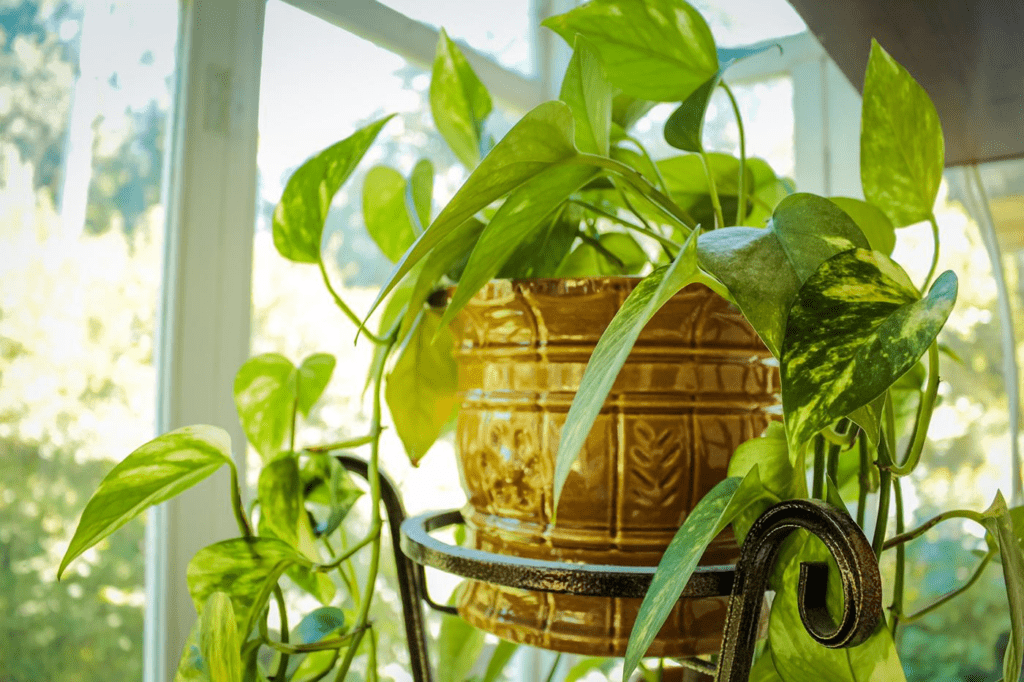
Top 10 Best Houseplants for Low Light

Even though low-light indoor plants are a great option if you don’t have many sunny windowsills, the lighting conditions might be difficult for indoor gardeners.
Even if they don’t get any direct sunlight, low-light houseplants should thrive in an east- or west-facing room with a few windows. However, even the most shade-tolerant plants will struggle in a space with no windows or just one window that faces north.
When that occurs, you can aid your plants by illuminating them for a few hours each day with artificial lighting.
1. Maidenhair Fern
The delicate, fan-shaped leaves of the maidenhair fern are grouped on dark stems. It’s a popular low-light indoor plant that adds a dash of green to any space. But for these ferns to flourish, the soil must be continually damp but not waterlogged. Along with avoiding direct sunlight, they also like a warm, humid environment.
2. Philodendron
One of the most impressive indoor plant species, the philodendron, is especially tolerant of dim illumination, making it one of the finest houseplants for low lighting. This fast-growing vine thrives in hanging baskets and can be trained to climb a totem pole or small trellis. Two more recent cultivars have vibrant foliage. While the ‘Micans’ variety has purple-flushed leaves with a satin-like texture, the ‘Brasil’ variant has stunning gold-and-green variegated foliage.
3. Snake Plant
One of the easiest-to-keep-alive and most resilient indoor plants is the snake plant. The author, Sears, asserts that “this plant actually prefers to grow in low light, opting for partial shade or very shady conditions.” Just make sure you give the plant the soil it prefers.”The pH of the soil you’re growing your snake plant in is important to its health, as it prefers soil that’s between 5.5 and 7.0 on the pH scale,” says Sears. If you need help with this, a soil testing kit can quickly detect the pH levels of your soil.
4. Peperomia
Low light levels are no problem for the adorable puckered heart-shaped leaves, though they love moderate light. Depending on the kind, the leaf may be smooth, green, or striped with wrinkles. Make sure to let it dry out completely in between watering.
5. Arrowhead Vine
The arrowhead vine prefers partial shade since it develops long stems as it ages. According to Steinkopf, if you can find a green type, it can tolerate low lighting and thrive in a north window or within a room close to a window.
The arrowhead needs to be maintained uniformly moist because its leaves are thinner and it dislikes dry environments. Consider placing yours on a tray of pebbles for natural humidity.
6. Lucky bamboo
The Dracaena is distinguished by its erect stem and thick, emerald foliage. It is ideal for a bathroom or office and requires soft, indirect lighting. Gardening Know-How states that the roots must be submerged in water, with water changes occurring every two to four weeks. You can also replant lucky bamboo on soil that drains well and water it frequently, but watch out for water logging. Some claim that your feng shui can benefit from this low-light houseplant.
7. ZZ Plant
Another choice that can withstand dryness and poor light is the ZZ, or Zamioculcas zamiifolia. This slow-growing cultivar has foliage that is all green and grows between one and three feet tall. According to Zazzara, the cultivar “Raven” has unusual leaves that start out pale green before fading to almost black.
8. Anthurium
Anthurium, also referred to as the flamingo flower, is a genus of tropical plants with bright flowers and lush leaves. These plants thrive in high humidity and soil that is consistently damp but not waterlogged. A lot of indirect, brilliant light will be present at the perfect location. In the full light, the leaves could burn. Due to their hazardous nature, keep these plants away from children and pets.
9. Gloxinia
Gloxinia can’t live in a room that is completely dark, but it will blossom magnificently anywhere it can get strong, indirect light that isn’t direct sunlight. Gloxinia, a near sibling of the African violet, has enormous velvety trumpet-shaped flowers in a spectrum of jewel-like hues. Do not soak the leaves; instead, use warm water. While the plants are in bloom, feed them once per month with a liquid houseplant fertilizer.
10. Pothos
Pothos is a fairly common indoor plant since it requires little maintenance in a variety of growing environments, according to Sears. But they particularly enjoy humidity. Sears suggests misting your pothos plant every few days in addition to watering it every one to two weeks to maintain particularly lush-looking foliage.
The drawback is that Pothos aren’t particularly pet-friendly. Thankfully, there is a quick repair that looks good. Growing it in a hanging basket would keep it out of the way and enhance the plant’s appearance, she advises.